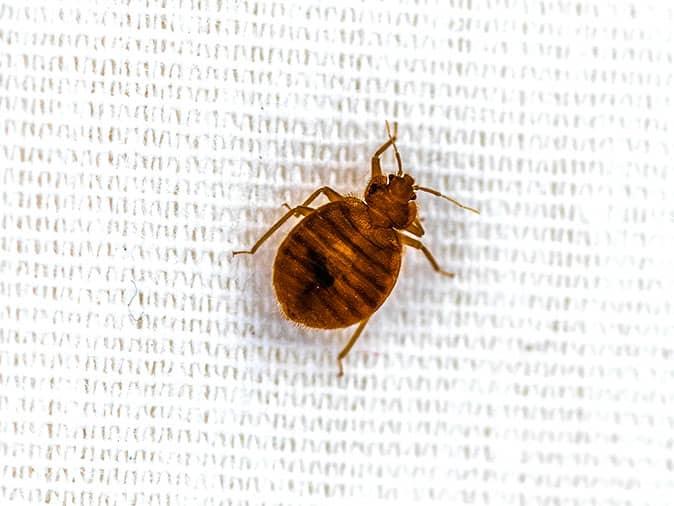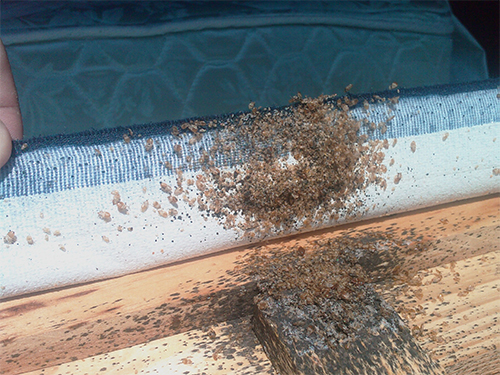Professional Bed Bug Exterminator Services for a Pest-Free Home
Get Informed Regarding the Types of Pest Control Techniques and Their Benefits for House Owners
Comprehending the numerous pest control methods readily available to property owners is necessary for reliable insect monitoring. House owners that are knowledgeable can make critical options that not only address parasite concerns but additionally enhance the total high quality of their living setting.
Chemical Insect Control Approaches
Chemical pest control methods are a critical part of integrated insect administration approaches for home owners looking for efficient solutions to pest invasions. These techniques involve the application of chemical materials created to remove or prevent parasites that threaten personal effects, health, and convenience. Common chemicals used consist of insecticides, herbicides, fungicides, and rodenticides, each tailored to target details parasites.
The primary benefit of chemical pest control is its rapid performance; numerous formulations give immediate results, lowering pest populations dramatically quickly. In addition, advancements in chemical formulations have led to items that are much more eco-friendly and have reduced poisoning degrees for non-target microorganisms when used correctly.

Biological Bug Control Strategies
All-natural insect control approaches have acquired prominence as homeowners seek safer and much more lasting alternatives to standard chemical approaches. Biological pest control techniques utilize all-natural killers, bloodsuckers, or virus to take care of bug populaces effectively. This technique is not only eco-friendly but also minimizes the threat of injury to non-target species, including helpful bugs and wild animals.
Among one of the most common organic control techniques entails presenting natural killers into the setting. Ladybugs can be made use of to manage aphid populaces, while nematodes target soil-dwelling insects like grubs. In addition, parasitoids-- organisms that live on or within a host-- can be utilized to manage certain bug types by laying eggs inside them, ultimately causing their death.
An additional method is the usage of biopesticides, which are originated from all-natural materials such as minerals, bacteria, or plants (bed bug exterminator). These items can effectively target bugs while presenting marginal threat to people and pet dogs. On the whole, organic bug control techniques supply homeowners with an effective means of pest administration that aligns with eco-friendly principles, advertising a healthier living setting while decreasing dependence on synthetic chemicals
Mechanical Insect Control Techniques
Mechanical parasite control approaches incorporate a range of approaches that physically prevent or eliminate pests without making use of chemicals. These methods are specifically useful for homeowners looking for eco pleasant alternatives while ensuring the safety and security of their living rooms.
One common technique is using barriers, such as traps, displays, and nets, which avoid bugs from getting in homes or details areas. Mounting home window screens can properly maintain bugs out, while utilizing physical obstacles around gardens can deter larger parasites like rabbits or deer. Furthermore, mechanical traps designed for rodents can capture and get rid of these parasites without the need for poisonous compounds.
Another reliable method entails using vacuum cleaners and mops to get rid of parasites straight from surface areas. Regular cleaning and upkeep can considerably decrease bug populaces by getting rid of food sources and hiding places. Employing tools like ultrasonic pest repellents can discourage different bugs via noise waves that are unpleasant to them but inaudible to humans.
Cultural Insect Control Practices
Cultural pest control techniques concentrate on here modifying the setting and administration techniques to create conditions that are much less helpful to pest problems. These practices are essential in keeping a well balanced ecological community and decreasing the dependence on chemical treatments. By changing agricultural practices, homeowners can efficiently hinder parasites while promoting plant health and wellness.
One typical technique includes crop turning, which interrupts the life cycles of insects by transforming the types of plants expanded in a particular area (bed bug exterminator). This not only decreases pest populations yet also improves dirt wellness. In addition, intercropping-- planting diverse crops in closeness-- can perplex bugs and lower their ability to situate their preferred host plants
Water monitoring is an additional vital aspect of social methods. look at here Proper irrigation techniques can protect against standing water, which acts as a reproduction ground for mosquitoes and various other parasites. Additionally, preserving cleanliness around the home, such as consistently getting rid of debris and food waste, can significantly reduce parasite tourist attraction.
Including these cultural practices into an extensive parasite management technique enables house owners to produce an environment that naturally discourages bugs, thereby enhancing the effectiveness of various other control techniques while promoting lasting gardening and landscape design.

Integrated Pest Management Approaches
Integrated Bug Management (IPM) stands for an all natural approach that combines various methods to successfully manage bug populations while reducing ecological impact. This method incorporates organic, social, physical, and chemical practices to accomplish lasting parasite control. By evaluating pest populations and their natural adversaries, IPM emphasizes monitoring and determining parasites before executing control measures.
One of the core principles of IPM is using limits, which develop the degree of insect task that necessitates intervention. This guarantees that treatments are used only when necessary, reducing the reliance on chemical pesticides. Biological control approaches, such as introducing all-natural predators or bloodsuckers, operate in conjunction with social practices like crop rotation and you can try this out habitat control to disrupt pest life process.
Additionally, IPM motivates making use of least-toxic chemical choices when intervention is needed, prioritizing items that present minimal danger to non-target microorganisms and the atmosphere. For home owners, taking on IPM comes close to not just boosts the efficiency of insect monitoring yet also promotes a much healthier living setting, fostering biodiversity and lowering chemical direct exposure. Inevitably, IPM encourages home owners to make informed choices that balance parasite control with ecological duty.
Verdict
In final thought, comprehending the numerous parasite control techniques empowers homeowners to make enlightened choices relating to pest monitoring. Each method-- chemical, organic, mechanical, cultural, and incorporated parasite administration-- supplies distinct benefits that cater to different demands and preferences.
Comprehending the numerous bug control methods available to house owners is essential for effective pest management.Chemical insect control methods are a critical component of incorporated insect monitoring strategies for home owners looking for effective solutions to pest problems. On the whole, organic pest control strategies supply homeowners with an efficient ways of pest administration that straightens with environmental concepts, advertising a much healthier living atmosphere while lowering reliance on synthetic chemicals.
Cultural pest control methods concentrate on modifying the environment and monitoring techniques to produce conditions that are much less favorable to pest problems.In conclusion, recognizing the numerous bug control techniques empowers homeowners to make enlightened choices relating to pest monitoring.